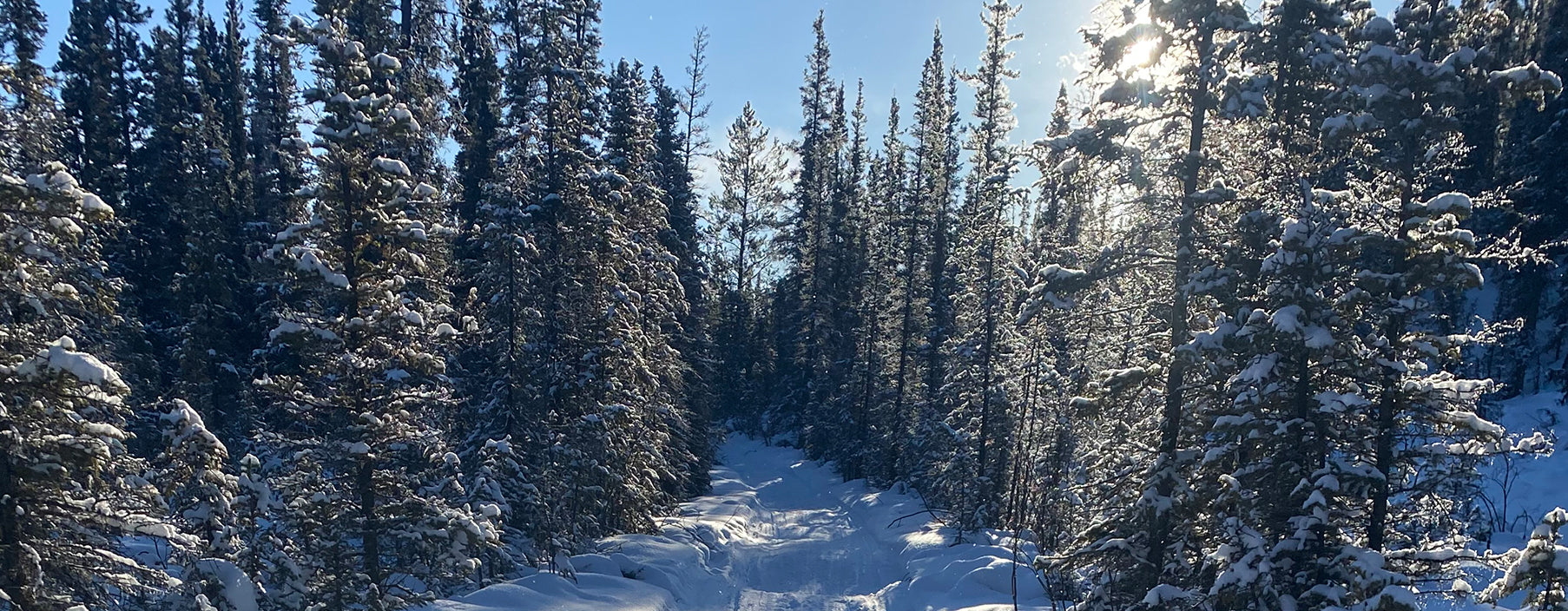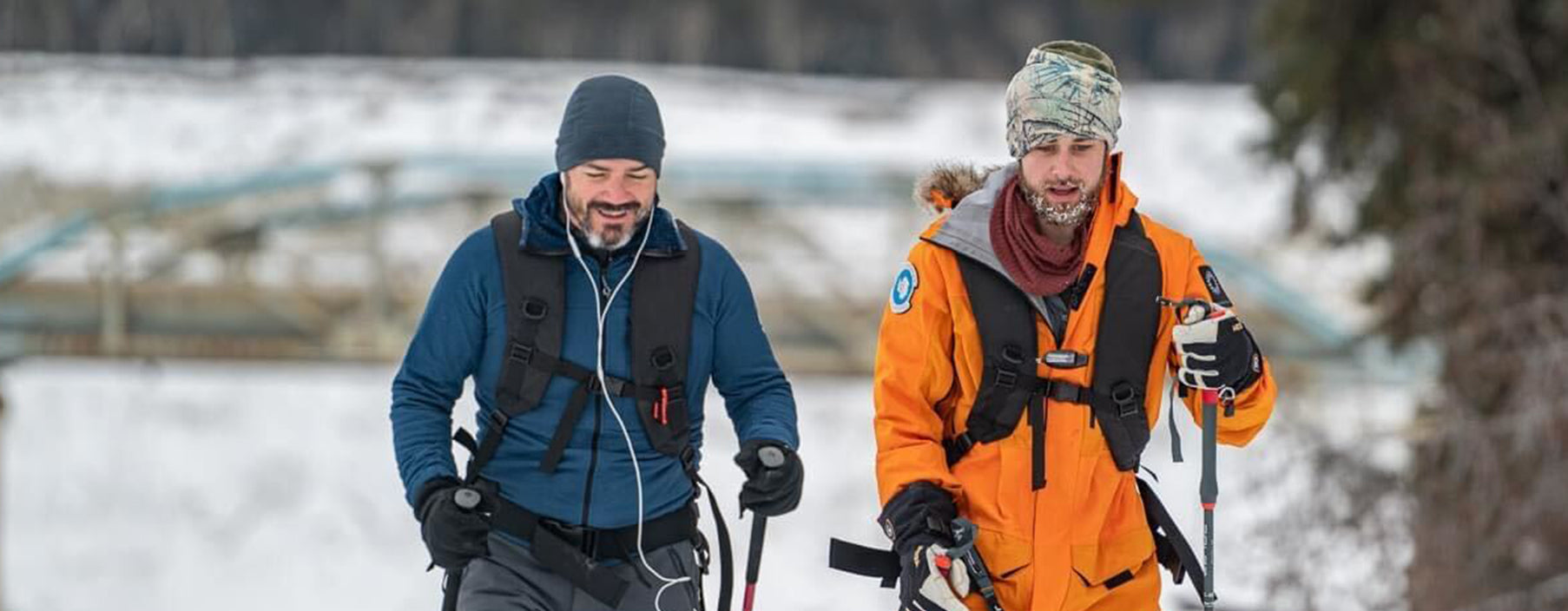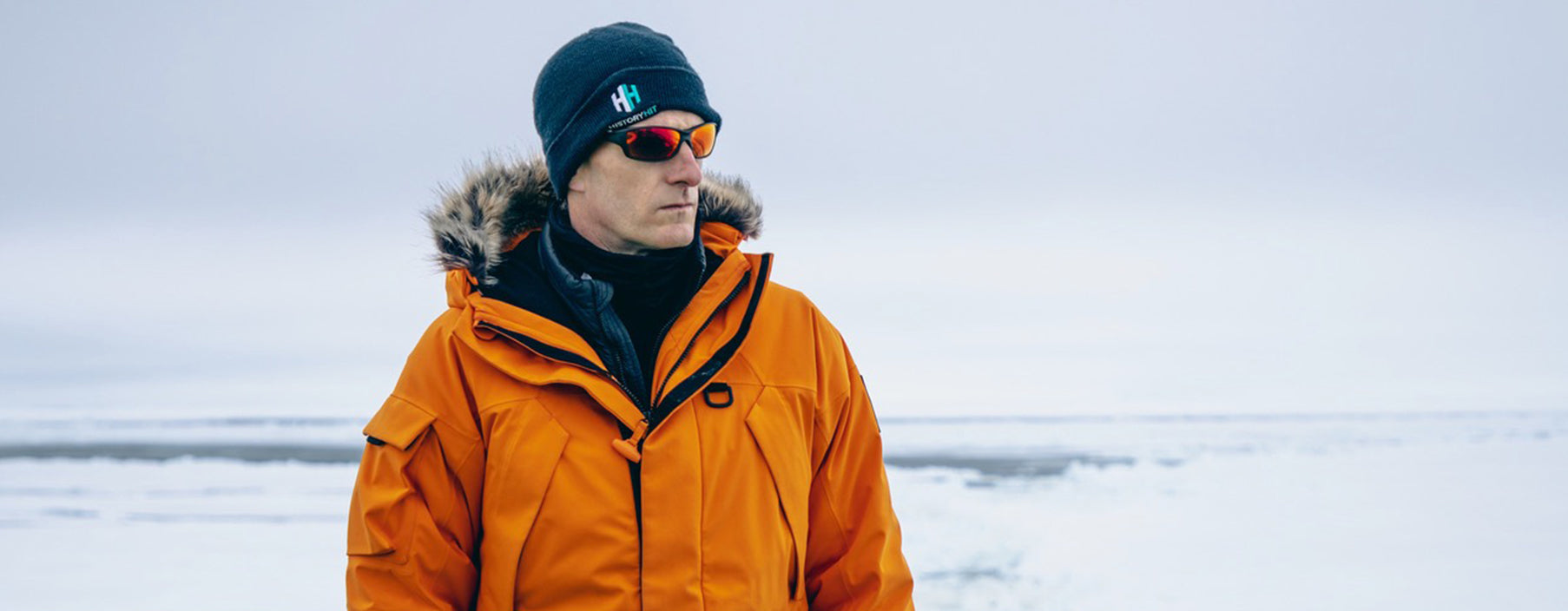
JACOB VALHALLA MYERS // The Montane Yukon Arctic Ultra (MYAU) Part 2
Jacob Valhalla Myers is an American Ultra Marathon runner living in Bozeman, Montana. This year he's aiming to be the youngest person to ever walk to the South Pole S/U/U. Having started his polar journey on the Shackleton Finse Polar Skills Challenge last year, this season he will be returning to Finse for the expedition season as a support guide for Louis Rudd and Wendy Searle. In February he took part in the gruelling Montane Yukon Arctic Ultra. This is part 1 of his expedition diary. Read part 1 HERE.
Forward Slowly. Downhill Fast.
I marched on until midnight that night where the hunger pains were setting in. I was ravenous and worked through 4 packs of energy gels in about five minutes. I understood at that moment why polar adventurers separated rations into separate, sealed bags. In this moment I had robbed my future self of a nice treat, but in Antarctica acting in this manner would mean starving myself of the future fuel that would keep me skiing south toward the pole. I was admittedly disappointed in myself for the lack of composure, and I probably would’ve prevented this if I stuck to my original eating schedule. This hunger was a sign that I was under fueling by a wide margin, and after running the numbers I was only hitting around 3,500 calories per 18-21 hour day on foot. I’ve got a lot of fight in me, but it’s been made apparent to me many times now that relying on that fact to push me forward is a fool’s recipe for success. Perhaps I’ve finally learned that lesson now.
I got a full 7 hours of sleep that night and plugged in for a full day of lake crossings. I didn’t feel cold that morning except for one moment after eating where my blood was shunting. For those that don’t know: after you eat, your body pulls blood from your extremities into your digestive organs, and this means the combination of sitting still while eating and the lack of warm blood in your fingers and toes can lead to cold injuries in those first 15-30 minutes after eating. Temperatures were in the single digits, which I was more than comfortable navigating by this point, and I’ve already trained myself to handle the shunting quite well.

Sometime the previous night I began experiencing a new sensation. It was as if there was a bungee cord in my right hamstring that was being pulled back and twanged with every step. It hurt, but aches and pains are status quo for ultrarunning so I didn’t pay it much mind. As the day pressed on and I crossed a series of lakes I felt the sensation in my leg increase in intensity.
A few extra water and food breaks were my original solution to the problem. I was probably moving sluggishly because I was hungry and tired, so a little food and some real focus on my form should improve the situation. By the time I arrived at Mandanna around 7:00pm that evening it had only gone downhill, but I was in great spirits in the medic tent. It’s always revitalizing seeing another person, and after a racer had come in behind me we had tons of laughs at how ridiculous the whole idea of dragging a sled through the Arctic in a race really was.
They fed me, refilled all my bottles, and wished me well as I stepped back onto the ice. The goal was to get to Carmacks by noon the next day, and I was well on pace to do so, at least for a while. The crash came on hard after I had settled back into my night walk, however. The pain in my leg and hip was ruining my form and slowing me down pretty significantly, and by this point the top part of my hamstring was switching between numb and tingling. I had to make a decision and stick with it. Was I going to press on and finish or call an early end to my race so I could have my leg evaluated. I’ve run a lot of ultras, and I’ve done a lot of long days in the mountains. My leg didn’t just feel like an ache, I was worried there was a legitimate issue going on, and if I pushed it too far I would have to risk abandoning my qualifying expedition for Antarctica and my new job guiding in Norway with Shackleton… I couldn’t do that.
Around midnight, 3.5 days and roughly 160 miles into this adventure I threw up the white flag and admitted defeat to the Montane Yukon Arctic Ultra.
Carmacks
Mark Kelly, the race photographer, scooped me up on his skidoo and I rode with him while he photographed other racers that night. He got me to Carmacks around 2:00am that morning, and I was greeted by a series of hugs, smiles, and ‘attaboys’ from the volunteer staff. I spent the next day as a volunteer myself, welcoming the racers and helping them make gear repairs, cooking them food and hot drinks, and generally revelling in the amazing progress they were making.
Even as my race was over, it was just as fulfilling getting to support everyone else’s, and after a full day at Carmacks I rode back to Whitehorse with another DNF’d racer.
Recap and Looking Forward
The Montane Yukon Arctic Ultra is in small part a race, but in reality it’s far more an adventure into the wilderness. The cold, isolation, and long days make for some of the highest highs and lowest lows one can experience during a race, and I found that managing my mental state in either direction was crucial to making good headway.
I’m now a full week removed from the race and have started physical therapy for what turned out to be a strained hamstring and some damage I had caused to my sciatic nerve. I leave for my qualifier in a month, and I will be pouring as much effort as I can into healing my body, gaining back the 9.5lbs (4.3kg) I had lost during the race, and seeing loved ones before disappearing back onto the ice for two months. I’m incredibly grateful for my experience in the Yukon, and hope to return as a competitor in two years, and maybe as a volunteer this next year if possible.
Tips for Future Racers
- Set yourself an eating, drinking, and sleeping schedule and stick to it. Dehydration can quickly lead to cold injuries, and hunger can ruin your form and lead to overuse injuries. You will need fuel to keep your internal furnace burning.
- Consider vapour barrier liners for your hands and feet. I run really hot, and this means I’m at risk of sweating. If I had worn a proper vapour barrier or surgical glove on my hands I likely would have avoided the frostnip on my thumb and generally would’ve been more comfortable throughout the race.
- The aid station is ALWAYS further away than you think. Stay patient, and more importantly stay present. Good form, an honest pace, and attention to the current hour will get you there a lot sooner and a lot healthier than spending hours craving that warm fire and rest.
- Get all your gear drying as soon as you enter an aid station. This will give it as much time as possible to regain loft and shed any ice that had been trapped in it. A lack of ice in your gear not only means it will perform better in the field, but it will also weigh less so you’ll place less strain on your body dragging heavy, frozen pieces of equipment.
FIND OUT MORE
Read part 1 of Jacob's MYAU expedition diary HERE.
See how you can start your polar journey on the Finse Polar Skills Challenge HERE.
Follow Jacob on Instagram HERE.


